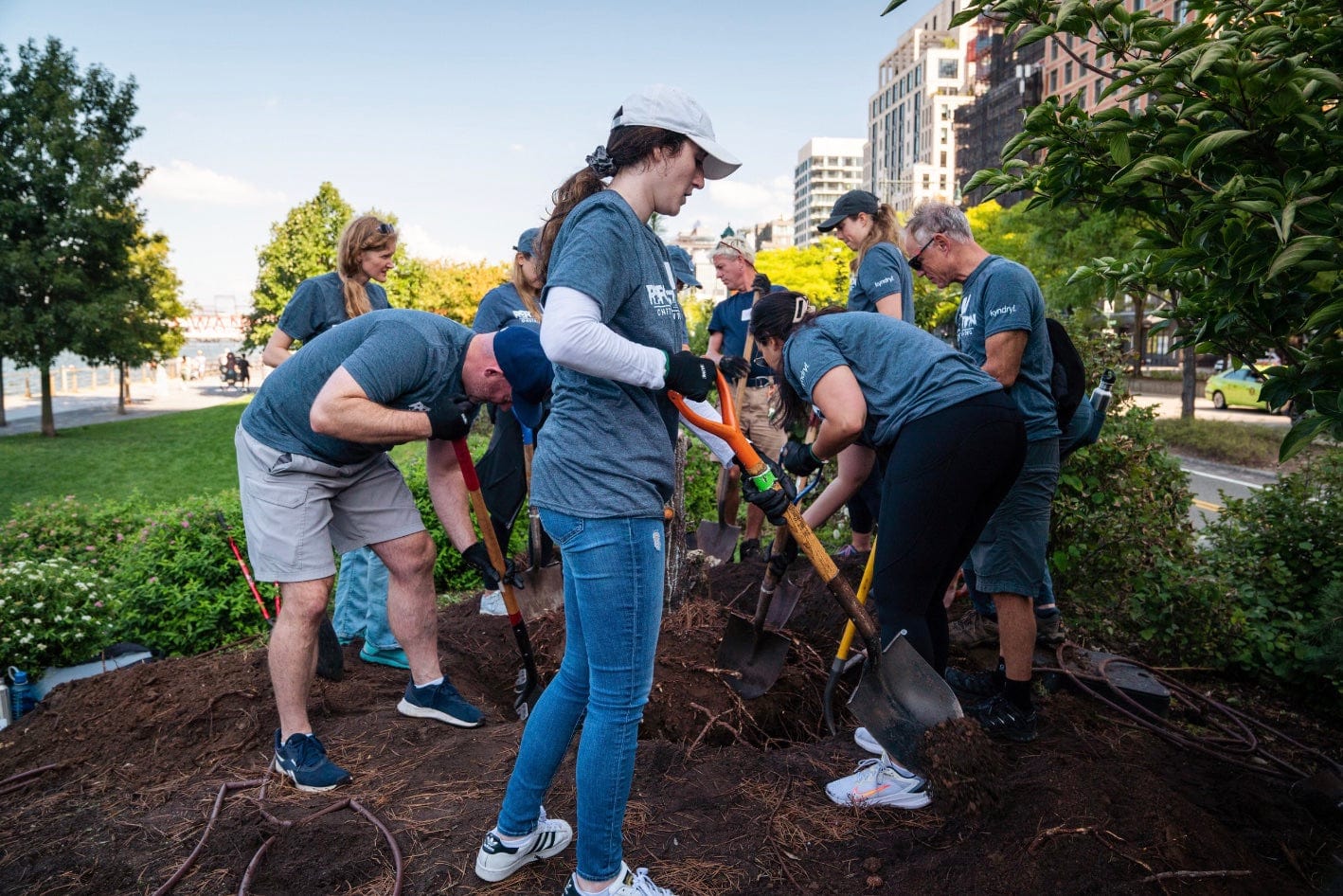7 Nature-Based Solutions that Help Address Climate Change

Get news, updates, & event Info delivered right to your inbox:
What Are Nature-based Solutions And How Do They Help?
With climate change becoming more prevalent as time goes on, many people wonder how, as a society, we can make a difference. How can we address the human impact on the environment while protecting people and wildlife from intensifying climate conditions? Nature must play a role in protecting and preserving the environment and human health.
Research has shown that Nature-based Solutions are the leading method to help address the effects of climate change on society and the environment.
But that begs the question: what exactly are Nature-based Solutions?
Nature-based Solutions are actions or policies that utilize nature to address some of the world’s most pressing challenges, such as water security, natural disasters, and climate change. The wide range of solutions prioritizes sustainably managing ecosystems to help address these challenges while safeguarding biodiversity and local communities' well-being.
When enacted properly, Nature-based Solutions help both the environment and people. It’s a win-win!
Let’s talk about some examples of Nature-based Solutions that are helping make an impact every day!

1. Tree Planting
It’s no secret that we love planting trees. Trees are nature’s best defenders against climate change. They help absorb carbon dioxide, provide habitat for wildlife, and clean air and water. Reforestation is one of the leading Nature-based Solutions that helps promote human health and restore the environment.

2. Urban Forestry
As the world continues to warm, cities are following suit at an alarming rate. The Urban Heat Island effect refers to the phenomenon where urban areas are significantly warmer than surrounding rural areas due to the heat absorbed and released by the built environment (including buildings, sidewalks, roadways, and more). Planting trees in our world’s cities helps mitigate the effects of Urban Heat Island — alongside many other benefits — growing a greener and more sustainable urban environment.

3. Wetland Restoration
Despite covering just 6% of the earth's land surface, wetlands provide food, clean drinking water, and refuge for people and wildlife. Since 1970, an estimated 35% of all wetlands have disappeared around the globe. Restoring these iconic ecosystems is a vital Nature-based Solution. Wetlands are home to some of the world’s most biologically diverse ecosystems on the planet. Protecting and restoring wetlands also protects ⅓ of America’s endangered species that rely on this unique habitat type!

4. Agroforestry
Agroforestry is the intentional use of trees and shrubs to cultivate a more sustainable and diverse land-use system. In many parts of the world, agroforestry helps boost crop productivity, reduce emissions, and restore natural ecosystems while creating more sustainable land uses. Utilizing agroforestry demonstrates how multifaceted reforestation is as a nature-based solution.

5. Coastal Ecosystem Reforestation
Coastal ecosystem restoration can take shape in many forms –– including the planting of mangroves. Mangroves play a vital role in our tropical and subtropical ecosystems. As salt-tolerant trees (halophytes), Mangroves can be found in the intertidal zone (the area where the coastlines meet land) in tropical and subtropical locations. Coastal mangrove forests safeguard millions of people from climate change impacts, including intensifying cyclones, tidal surges, and coastal erosion. A wave passing within 100 meters of a mangrove forest can lose around 2/3 of its energy. Experts estimate that mangrove ecosystems prevent more than $65 billion in property damage and reduce flood risks for around 15 million people every year.

6. Green Infrastructure
As technology advances, many communities are getting creative with ways to promote nature-based solutions and make our world a more sustainable place. Green infrastructure helps communities provide a more sustainable infrastructure by building with nature. Green roofs are one of the leading examples of green infrastructure. Instead of deeming rainwater a waste, green roofs and infrastructure utilize it as a resource, using rainfall infiltration and evapotranspiration of stored water

7. Watershed Restoration
Watersheds are threaded throughout the landscapes we depend on and directly impact the quality and quantity of our water resources. They are areas of land that drain precipitation, such as rain or snow, into a connected water body — a river, lake, or ocean. These areas play a critical role in collecting, storing, and transporting water, shaping the surrounding landscape, and influencing the quality of water resources downstream. Due to the critical role they play in ecosystem and community health, watershed restoration is an essential Nature-based Solution.
Nature-based Solutions are all about working with nature to help mitigate the effects of climate change and create a more sustainable future. By planting trees today, you are helping promote one of the leading Nature-based Solutions and impact communities worldwide. Let’s make an impact together!
Get news, updates, & event Info delivered right to your inbox:
Related Posts
9 Sustainable New Years Resolutions
18/12/2025 by Meaghan Weeden
Inspirational Quotes About Trees
16/12/2025 by Meaghan Weeden
The 9 Oldest, Tallest, and Biggest Trees in the World
11/12/2025 by One Tree Planted
Popular On One Tree Planted
Inspirational Quotes About Trees
16/12/2025 by Meaghan Weeden
The 9 Oldest, Tallest, and Biggest Trees in the World
11/12/2025 by One Tree Planted
What Causes Deforestation?
10/07/2025 by Meaghan Weeden
Fundraising Disclosures

Be Part of the
Restoration Movement
The Grove is more than just a monthly giving program: it's a vibrant community of individuals who are dedicated to reforestation and environmental restoration on a global scale.
As a member of The Grove, you affirm your commitment to restoring forests, nurturing biodiversity, and fostering positive global change.



